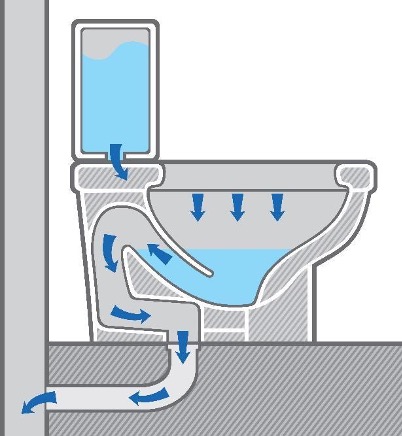Plumbing advice
How to install a toilet
15 Sept 2020 • 6 minutes


Does your old toilet need replacing? If so, this guide could provide you with all the advice you need to fit a new one. Many aren’t aware that a toilet can be installed DIY, but with the following steps you could have your brand-new toilet up and running in no time.
There are a number of reasons for installing a new toilet. It’s usually quite simple to spot signs that your current loo needs replacing. These include:
In simple terms, a toilet is made up of a tank and a bowl. The tank (called the cistern) is positioned above the bowl and contains water that refills after each flush. The bowl holds water and links to the sewage drain for waste and water disposal. When the toilet is flushed, water from the cistern flows into the bowl forcing the contents through the ‘S bend’ and out to the sewage pipe.

It typically takes 1-4 hours to fit a toilet depending on the type of toilet you are fitting and your experience in conducting the job. Then you just need to fit your toilet seat, which should only take minutes (depending on the toilet!).
There are a few measures you’ll need to take prior to installing your new toilet. These include:
Here are the main tools you’ll need for the job:
If you’re installing a toilet from scratch or fitting a system that has a cistern tank that is not connected directly to the pan or bowl, you may need to use some of the following equipment too:
These preparatory steps will also allow you to identify any elements that need replacing, other than the toilet.
We recommend taking your old toilet to your local household waste recycling centre (also known as “the tip”). You can find your local tip by searching online or visiting your local council’s website, you can also call them prior to making the trip to ensure that they can accept it.
Remember to ensure that the toilet is clean and dry before moving it and taking it to the recycling site.
Now for the main event – installing your new toilet.
Note: We recommend reading through your manufacturer’s instructions before you begin.
Here’s our step by step guide to fitting your new toilet:
Some say that toilets can last up to 50 years. However, there are a number of ways in which you can help prolong the life of your bathroom throne. These include:
A problem may arise with your toilet and if you’re not confident in being able to sort it yourself, we can help. HomeServe have a network of plumbing and drainage experts that could help. Get in touch with our home repairs team to find out more.
Our help & advice articles cover Plumbing, Home heating, Electrical, Energy-saving and Home maintenance.